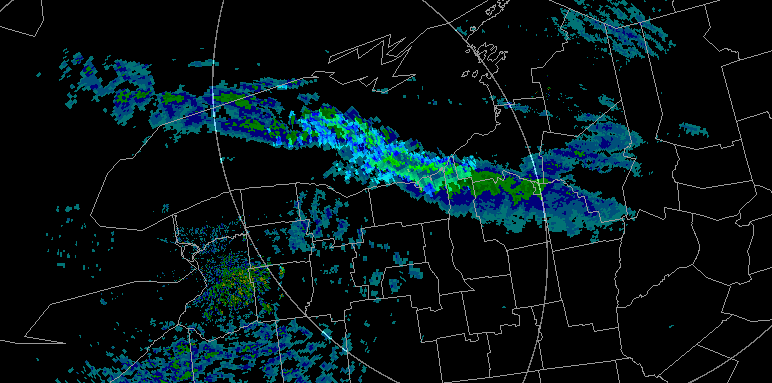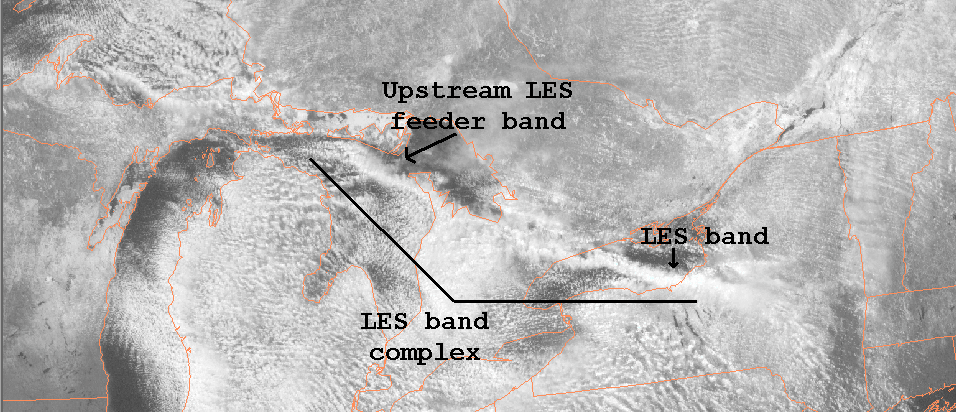Binghamton, NY
Weather Forecast Office
The National Weather Service has been studying lake effect snow (LES) for many years. LES events occur to varying degrees on all of the Great Lakes as well as other bodies of water such as the Great Salt Lake in Utah. For the most part LES events are single lake events with bands of snow off of Lake Ontario, bands of snow off of Lake Erie, etc. However, when atmospheric parameters are favorable multiple LES bands from different lakes can merge and enhance snow fall rates farther downstream. Additional information can be found on the The Science Behind Lake-Effect Snow page.

By looking at the visible satellite picture below we can see what is happening. A single band of LES has also formed over Lake Huron, upstream of the Lake Ontario band. The wind direction was just right across the lakes to allow the bands to merge into a large LES band complex spanning several hundred miles, with the band over Lake Huron feeding into the band over Lake Ontario. Having an upstream LES band reinforce another band farther downstream makes the downstream band a better snow producer than it would have been by itself.
This particular case occurred in late March. LES bands typically lose their identity and become more cellular as a result of heating during the afternoon especially early and late in the season. By having an upstream band for reinforcement, the single band downwind of Lake Ontario was able to maintain its integrity throughout the afternoon despite relatively strong insolation.
Current Hazards
Briefing
Drought
Fire Weather
Graphical Hazardous Weather Outlook
Hurricanes
Local Outlook
River Flooding
Space Weather
Thunderstorms
Winter
Current Conditions
Air Quality
Local Storm Reports
Observation (list)
Observations (Map)
More Surface Observations
Rainfall
Satellite
More Satellite
Upper Air
Radar
Local Enhanced Radar
Local Standard Radar (low bandwidth)
Regional/National Standard Radar (low bandwidth)
More Radar
Forecasts
Activity Planner
Aviation
Detailed View
Fire Weather
Forecaster's Discussion
Hourly View
Map View
Model Data
Space Weather
Text Products
User Defined Area Forecast
Rivers and Lakes
River Forecasts (Map)
River Observations (Map)
River Forecast Centers
River Forecasts (Text)
Ensemble River Guidance
Current Streamflow
Flood Inundation Maps
River Monitor
US Dept of Commerce
National Oceanic and Atmospheric Administration
National Weather Service
Binghamton, NY
32 Dawes Drive
Johnson City, NY 13790
(607) 729-1597
Comments? Questions? Please Contact Us.


